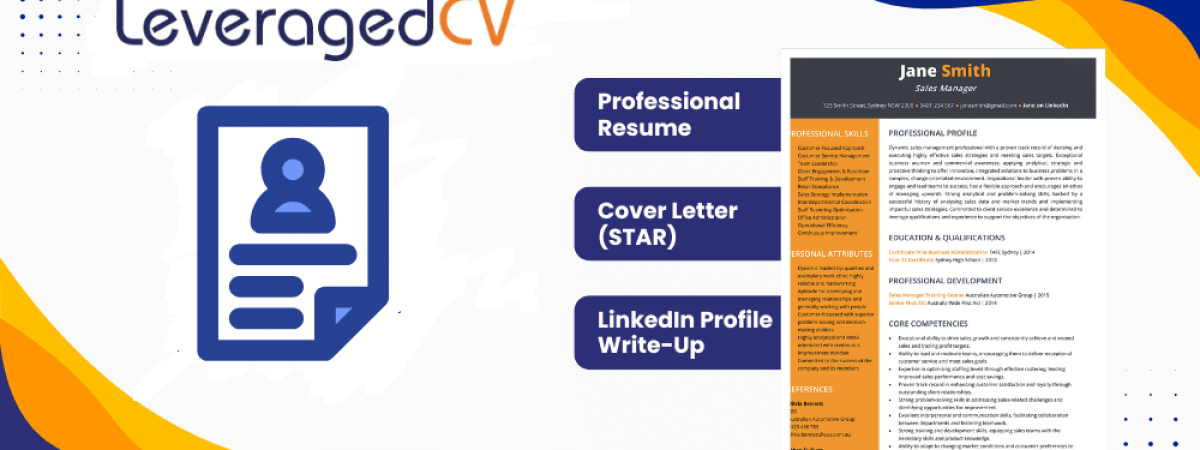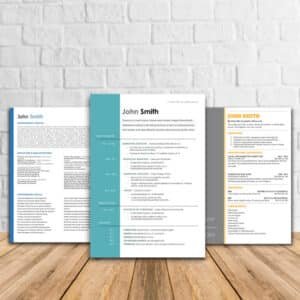When it comes to job hunting, your CV is often your first impression. A strong, well-structured CV can open doors, while a weak one can close them instantly. At Leveraged CV, we’ve worked with clients across Birmingham, Brighton, Cambridge, Leeds, Liverpool, London, Oxford, Plymouth, York, and Manchester, helping them stand out in competitive markets. If you’re wondering what to put on a CV or how to compose a good CV that lands interviews, you’re in the right place.
Below, we outline the five essential elements you absolutely must include on your curriculum vitae, along with helpful insights and good curriculum vitae examples.
- A Powerful Personal Profile
Your personal profile is the elevator pitch of your CV. It should sit at the top, just under your name and contact details, and give employers a clear idea of who you are and what you bring to the table.
What to Include:
- A brief summary (3–4 lines) of your career background
- Key skills and achievements
- Career goals and what you’re seeking in your next role
Why It Matters:
Recruiters often spend less than 10 seconds scanning each CV. A strong personal profile immediately hooks their attention and makes them want to read more.
Example:
“Experienced digital marketer with over 8 years in the tech sector. Proven ability to drive 300% ROI on multi-channel campaigns. Now seeking a growth-focused role in an innovative company.”
- Work Experience with Quantifiable Results
Employers want to know not only where you’ve worked but what you achieved. Including detailed, results-driven work experience shows the impact you’ve made.
What to Include:
- Job title, company name, and dates of employment
- 3–6 bullet points outlining responsibilities and achievements
- Focus on outcomes (e.g. increased revenue, reduced costs, improved efficiency)
Tips:
- Start each bullet with a strong action verb (e.g. led, implemented, developed)
- Use numbers wherever possible to highlight results
Example:
“Managed a team of 5 to deliver a product launch, increasing sales by 40% in six months.”
For more ideas, CV writers often refer to good curriculum vitae examples that illustrate impactful, quantifiable achievements.
- Key Skills and Competencies
A dedicated skills section helps recruiters quickly match your capabilities with the job description. This section is especially useful when tailoring your CV to different roles.
What to Include:
- Technical skills (e.g. Python, Salesforce, etc.)
- Soft skills (e.g. communication, leadership, problem-solving)
- Industry-specific tools or certifications
Tips:
- Be honest about your level of expertise
- Use keywords from the job ad
Example:
“Project Management | Data Analysis | Customer Retention | Adobe Creative Suite | B2B Marketing”
When looking at examples curriculum vitae, the best ones clearly present skills in a clean, easy-to-read format.
- Education and Qualifications
While work experience often carries more weight, your education still matters—especially for entry-level roles or industries like academia, law, or healthcare.
What to Include:
- Degree title, institution name, and graduation year
- Relevant certifications or courses
- Awards or academic honours (if recent)
Tips:
- List your most recent qualification first
- Only include high school if you don’t have tertiary qualifications
Example:
“BA (Hons) in Business Management, University of Leeds, 2018”
Still unsure what should a curriculum vitae look like? Look at the best curriculum vitae examples and you’ll see this section is always clearly structured and concise.
- Contact Information and Professional Links
It may seem obvious, but missing or incorrect contact details can cost you an interview. Make it easy for recruiters to reach you.
What to Include:
- Full name
- Phone number
- Professional email address
- LinkedIn profile (ensure it’s updated!)
- Optional: personal website or portfolio (especially for creative roles)
Tips:
- Don’t include personal details like date of birth or marital status
- Avoid using an unprofessional email address
Example:
“xx.xx@gmail.com | 0044-XXXX XXXXXX| linkedin.com/in/xxxxxxxx”
Bonus Tip: Tailor Your CV to Each Job
One of the best ideas CV writers suggest is to tailor your CV to each role. Use the job description as your guide—mirror the language, highlight the skills they’re looking for, and place emphasis on relevant experience.
You can also use good curriculum vitae examples as templates, but be sure to personalise the content.
Final Thoughts
Your CV is a marketing document—not a life story. Keep it focused, results-oriented, and tailored to the job. At Leveraged CV, we specialise in helping job seekers across Birmingham, Brighton, Cambridge, Leeds, Liverpool, London, Oxford, Plymouth, York, and Manchester create standout CVs that get results.
Still wondering how to compose a good CV? Need help fine-tuning your layout, formatting, or content? Browse our website or contact our expert team for one-on-one support.
Ready to make your next move? Let us help you turn your CV into a powerful tool for career success.



